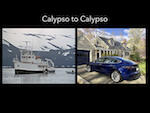Context. Star formation takes place in cold dense cores in molecular clouds. Earlier observations have found that dense cores exhibit subsonic non-thermal velocity dispersions. In contrast, CO observations show that the ambient large-scale cloud is warmer and has supersonic velocity dispersions.
Aims. We aim to study the ammonia (NH3) molecular line profiles with exquisite sensitivity towards the coherent cores in L1688 in order to study their kinematical properties in unprecedented detail.
Methods. We used NH3 (1,1) and (2,2) data from the first data release (DR1) in the Green Bank Ammonia Survey (GAS). We first smoothed the data to a larger beam of 1′ to obtain substantially more extended maps of velocity dispersion and kinetic temperature, compared to the DR1 maps. We then identified the coherent cores in the cloud and analysed the averaged line profiles towards the cores.
Results. For the first time, we detected a faint (mean NH3(1,1) peak brightness < 0.25 K in TMB), supersonic component towards all the coherent cores in L1688. We fitted two components, one broad and one narrow, and derived the kinetic temperature and velocity dispersion of each component. The broad components towards all cores have supersonic linewidths (ℳS ≥ 1). This component biases the estimate of the narrow dense core component’s velocity dispersion by ≈28% and the kinetic temperature by ≈10%, on average, as compared to the results from single-component fits.
Conclusions. Neglecting this ubiquitous presence of a broad component towards all coherent cores causes the typical single-component fit to overestimate the temperature and velocity dispersion. This affects the derived detailed physical structure and stability of the cores estimated from NH3 observations.

 Note: This talk was accompanied by a special listing of "links and pointers," at ...
Note: This talk was accompanied by a special listing of "links and pointers," at ...
 An invited retrospective on how Alyssa Goodman's many seemingly-unrelated research pursuits and interests evolved, and are actually related.
An invited retrospective on how Alyssa Goodman's many seemingly-unrelated research pursuits and interests evolved, and are actually related.

